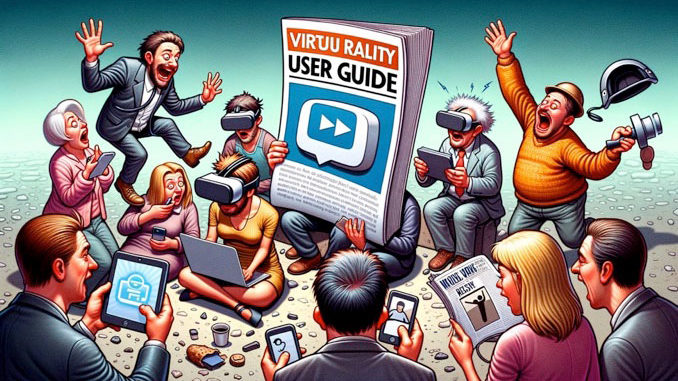
Virtual reality (VR) technology uses computer-aided stimuli to create the immersive illusion of being somewhere else. However, opinions on its potential range from it upending our lives in a way nothing has since the smartphone, to being the technological equivalent of trying to make “fetch” happen. VR promises to allow users to interact more intuitively with objects and information without the middle layer of screens and keyboards. While VR is dependent on headsets, augmented reality (AR) is often experienced through a phone. The current VR life cycle began with the earliest Oculus Rift prototypes at the 2012 E3 videogame trade show. The idea of immersing oneself in 3D environments has been present since the 19th century. VR’s roots also extend to science fiction. Stanley G. Weinbaum’s 1935 short story “Pygmalion’s Spectacles” was the first mention of glasses that could make the wearer a part of the story. Jaron Lanier, a twenty-something college dropout, dubbed it “virtual reality” in the 1980s.
The Potential of VR
Virtual reality allows for a more intuitive way of interacting with objects and information by eliminating the middle layer of screens and keyboards. However, opinions on its potential range from it upending our lives in a way nothing has since the smartphone, to being the technological equivalent of trying to make “fetch” happen. The truth lies somewhere in between, but either way, VR represents a significant shift in the way humans experience the digital realm. Augmented reality (AR) and mixed reality (MR) are cousins of VR that can all be lumped into the umbrella term XR, for “extended reality.” VR depends on headsets, while AR is often experienced through a phone.
The History of VR
The current VR life cycle began with the earliest Oculus Rift prototypes at the 2012 E3 videogame trade show. The idea of immersing oneself in 3D environments has been present since the 19th century. If almost identical images are presented to each eye, the brain combines them to find depth in their discrepancies, as was used in stereoscopes and View-Masters. Science fiction, such as Stanley G. Weinbaum’s 1935 short story “Pygmalion’s Spectacles,” where glasses made the wearer part of the story, paved the way for VR. Ivan Sutherland, a University of Utah computer science professor, created the first “head-mounted display” called the Sword of Damocles in the late 1960s. Jaron Lanier, a twenty-something college dropout, dubbed it “virtual reality” in the 1980s.
Conclusion
Virtual reality is a significant shift in the way humans experience the digital realm by allowing for a more intuitive way of interacting with objects and information without screens and keyboards. Although opinions on its potential range from upending our lives in a way nothing has since the smartphone to being a technological failure, the truth lies somewhere in between. Augmented reality (AR) and mixed reality (MR) are also similar technologies. While VR depends on headsets, AR is often experienced through a phone. The idea of immersing oneself in 3D environments has been present since the 19th century, and science fiction has paved the way for VR. Jaron Lanier, a twenty-something college dropout, dubbed it “virtual reality” in the 1980s.




